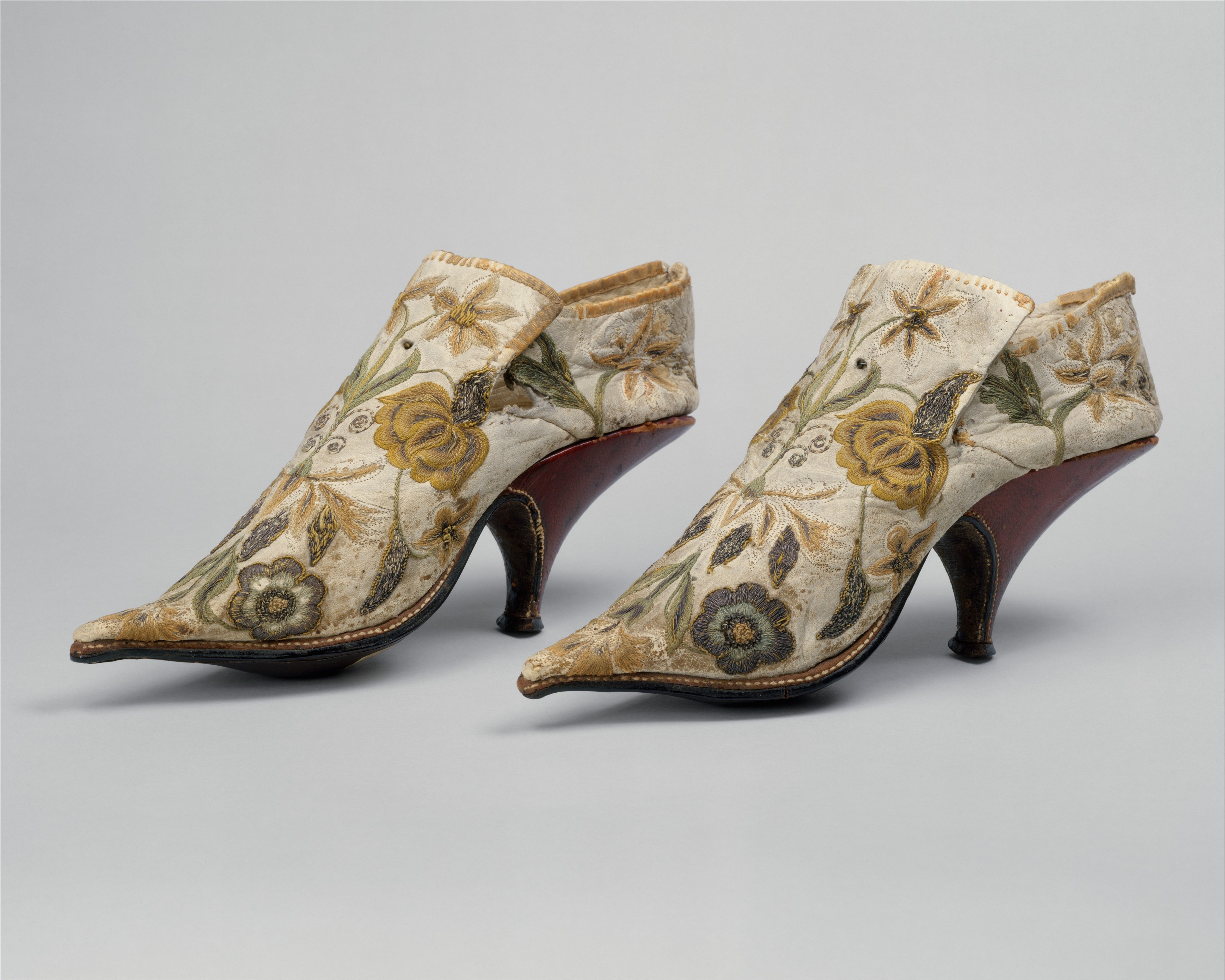I’ve already explained what a textile conservator is, but what exactly is a textile? The meaning seems obvious until you try to clearly define what is a textile. A tapestry is clearly a textile, but what about a shoe? Does it matter if the shoe is made of silk or leather? Should you bring it to a textile conservator or an object conservator? To answer these questions, I turned to the dictionary.
Definition of a Textile
Dictionary.com defines a textile as “any cloth or goods produced by weaving, knitting, or felting.” But what about the myriad other ways of creating a textile such as crochet, naalbinding, or sprang? The definition lists the three most popular ways of creating textiles, but these are certainly not the only techniques.
Wikipedia says “A textile is a flexible material made by creating an interlocking network of yarns or threads, which are produced by spinning raw fibres (from either natural or synthetic sources) into long and twisted lengths.” But what about felting, an incredibly important textile making technique? Felt making skips the spinning process entirely, but still counts as a textile.
According to the Oxford English Dictionary a textile is “A type of cloth or woven fabric.” There really isn’t a lot of information to work with here, is there? This definition makes it seem that an object only counts as a textile before it’s made into something. By this definition a bolt of fabric is a textile, but not the quilt it is made into.
Unfortunately for dictionary writers, a textile is such an incredibly broad concept that it becomes difficult to define. There are just so many materials, manufacturing techniques, and uses that it becomes very challenging to find one definition that covers everything that the word textile encompasses.
In my opinion, a textile must be flexible, made from fibres, and human made (sorry, birds). Technically, this definition also includes paper and fibre optic cables. So I will also add the caveat that it has to be widely recognized as a textile.

Examples of Textiles
Many objects that textile conservators regularly work on easily fit within our definition of a textile. This includes tapestries, embroidered samplers, clothing, and quilts. They’re all flexible, made from fibers, and human made. Most people when you ask “Are these textiles?”, would respond yes.

Things get a bit less clear when you move onto multimedia objects. What about our titular shoe? Shoes can contain a wide range of materials including leather, fabric, and multiple types of plastic. They are flexible and human made, but they aren’t exclusively made of fibers. You don’t look at a shoe and say “Yes, that is a textile.” In my opinion, shoes are not textiles.
Textile Conservator or Not
But who would conserve a shoe? Most likely a textile conservator. I know, I just said that they aren’t textiles. However, as a piece of clothing they are textile adjacent and are often in a collection cared for by a textile conservator. They also contain many textile elements.
The particular issue with an object will also determine which type of conservator is most suited to treating it. If an upholstered chair has major holes in the fabric, it may go to a textile conservator. If the wood is structurally weak, it may go to an object conservator. Oftentimes, two or more conservators may collaborate on a multimedia object.
It also depends on the individual textile conservator. Some conservators are very knowledgeable about a wide range of materials that are commonly found alongside textiles such as leather, metal, and plastics. Others choose to focus on a specific type of object such as tapestries or furniture. If you aren’t sure what type of conservator is best suited for your object, just ask!
Conclusion
What is a textile is not very clear, even to a textile conservator. In general a textile is:
- flexible
- made from fibres
- human made
- and is recognized as a textile
If you’re wondering what type of conservator should treat your object, I recommend contacting a local conservator. They will be able to guide you towards a professional who is most suited to care for your object! If you’re in Scotland or Northern England, contact Rossi Conservation here.
